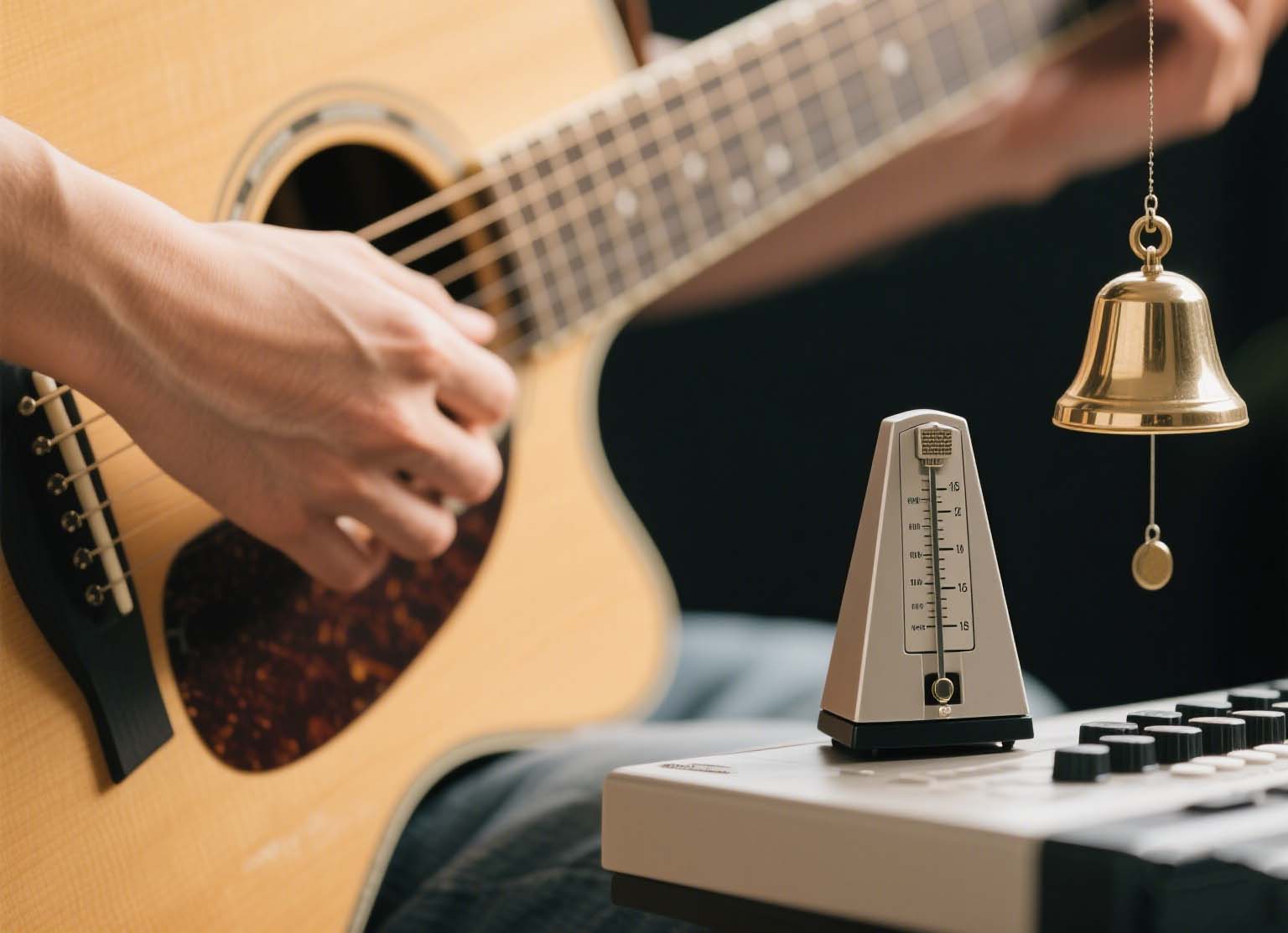Exercise 1: Basic Quarter Note Synchronization
The Foundation of Rhythmic Precision
Set your metronome to a comfortable tempo (60-80 BPM for beginners). Clap or play single notes that align exactly with each click. Focus on achieving perfect synchronization between your actions and the metronome's pulse. Practice this for 5 minutes daily, gradually increasing the tempo by 5 BPM increments as your accuracy improves.
For instrumentalists: Play a single repeated note on your instrument. For vocalists: Sing a comfortable pitch using a neutral syllable like "ta" or "la". The goal is to develop what musicians call "metronomic precision" - the ability to match the metronome's timing with absolute accuracy.
Exercise 2: Subdivision Practice
Developing Inner Pulse Awareness
Set your metronome to a moderate tempo (50-60 BPM) and treat each click as beat 1 of a 4/4 measure. Count aloud "1, 2, 3, 4" with the click falling on "1". Then clap or play notes on all four beats while the metronome continues to mark only beat 1. This develops your ability to subdivide time and maintain consistent tempo between metronome clicks.
Progress by creating more challenging patterns:
- Clap on beats 2 and 4 only (while the metronome clicks on 1)
- Clap on beats 1 and 3 only
- Clap on beat 3 only
Exercise 3: Rhythmic Displacement
Building Rhythmic Independence
Set your metronome to click on beats 2 and 4 (the "backbeat") rather than 1 and 3. This simulates how a snare drum typically plays in many musical styles. Practice playing or clapping on beats 1 and 3 while the metronome handles 2 and 4. This exercise develops rhythmic independence and strengthens your internal sense of pulse.
For an additional challenge, try playing eighth notes continuously while maintaining awareness of where the metronome clicks fall within your pattern. This exercise is particularly valuable for developing the rhythmic foundation needed in jazz, funk, and other groove-based music styles.
Exercise 4: Gradual Tempo Changes
Mastering Controlled Acceleration and Deceleration
This exercise requires a metronome with programmable tempo changes (or you can manually adjust a standard metronome). Begin at a moderate tempo (e.g., 80 BPM) and program your metronome to gradually increase to 100 BPM over 2 minutes, then gradually decrease back to 80 BPM. Play consistent quarter notes throughout this tempo transition.
The goal is to maintain perfect synchronization with the metronome even as the tempo shifts. This develops your ability to handle tempo modulations smoothly - a crucial skill for ensemble playing and for music that incorporates accelerandos and ritardandos. If your metronome doesn't have this feature, manually increase the tempo by 4 BPM every 15 seconds.
Exercise 5: Polyrhythmic Coordination
Advanced Rhythmic Independence
Set your metronome to a slow tempo (40-60 BPM). With your dominant hand, tap triplets (3 evenly spaced taps per click), while your non-dominant hand taps quarter notes (1 tap per click). This creates a 3:1 polyrhythm - one of the fundamental polyrhythmic relationships in music.
Start by practicing each hand's pattern separately, then combine them. The coordination point is that both hands should tap together exactly on each metronome click. This exercise develops rhythmic independence between limbs and improves your ability to maintain multiple rhythmic layers simultaneously - an essential skill for pianists, drummers, and other instrumentalists who must coordinate independent rhythms.
Pro Tip: Record yourself practicing these exercises. Listening back objectively will reveal rhythmic inconsistencies that you might not notice while playing. Consistent daily practice with these five exercises, even for just 10-15 minutes, will dramatically improve your rhythmic accuracy and confidence.






